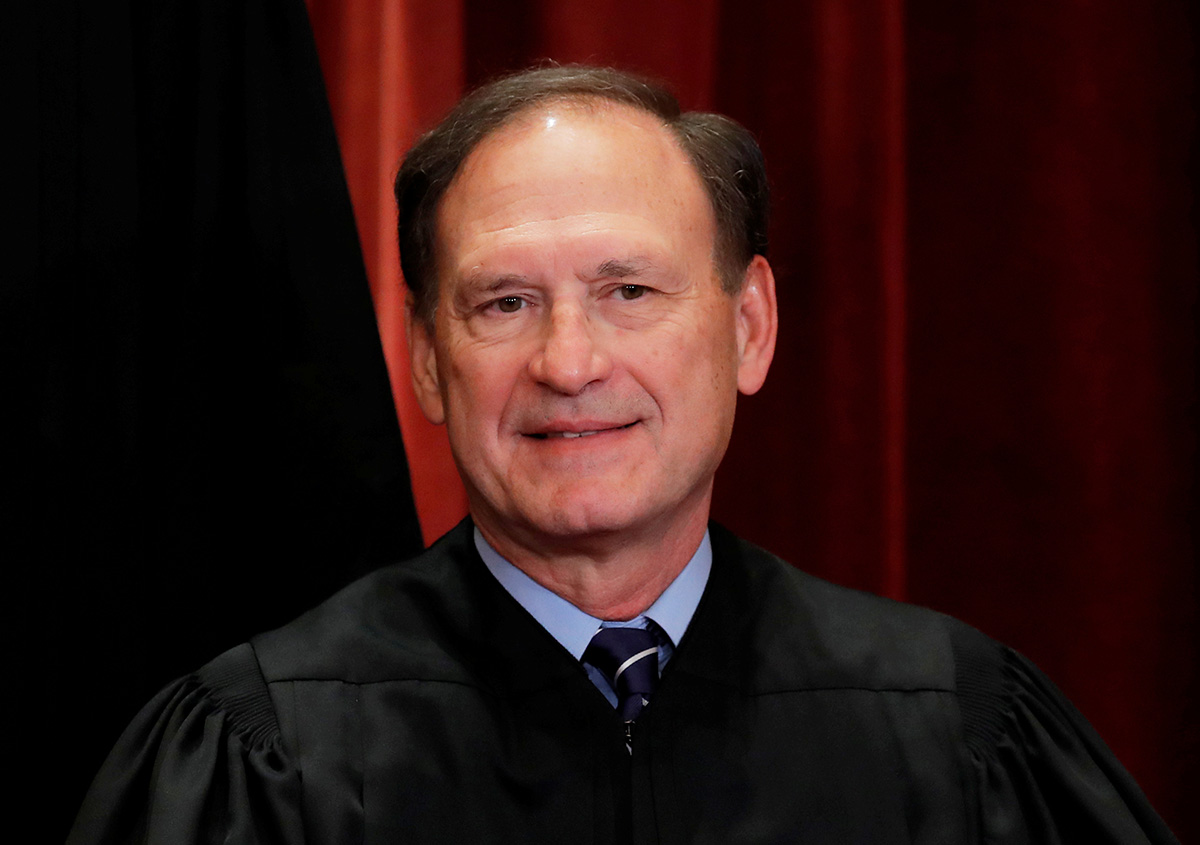
Fashback to 2017!
______________________
Alito: ‘A pollutant is a subject that is harmful to human beings or to animals or to plants. Carbon dioxide is not a pollutant. Carbon dioxide is not harmful to ordinary things, to human beings, or to animals, or to plants. It’s actually needed for plant growth. All of us are exhaling carbon dioxide right now. So, if it’s a pollutant, we’re all polluting.’
Via: http://www.scotusmap.com/posts/2
Justice Samuel Alito’s remarks at the Claremont Institute, 2/11/2017
On February 11th, 2017, Justice Samuel Alito received the Statesmanship Award and delivered the keynote speech at the Claremont Institute’s 2017 annual dinner in honor of Sir Winston S. Churchill. Diane Lenning has posted video clips of the speech to her YouTube page.
Alito speech excerpt:
Here’s another example: regulation of the emission of carbon dioxide and other greenhouse gases. Now, Americans are, obviously, of two minds about the regulation of greenhouse gases and the question of climate change. But one thing that I think is beyond dispute is that whatever our country does about this matter is important. It will have a profound effect on the environment, or the economy, or on both. In a healthy republic, this issue would be publicly debated, and the basic policy choices would be made by the elected representatives of the people. That is the system prescribed by our Constitution. But that is not what has happened.
The Clean Air Act was enacted by Congress way back in 1970, and it regulates the emission of “pollutants” – that’s the term in the statute. Now, what is a pollutant? A pollutant is a subject that is harmful to human beings or to animals or to plants. Carbon dioxide is not a pollutant. Carbon dioxide is not harmful to ordinary things, to human beings, or to animals, or to plants. It’s actually needed for plant growth. All of us are exhaling carbon dioxide right now. So, if it’s a pollutant, we’re all polluting.
When Congress authorized the regulation of pollutants, what it had in mind were substances like sulfur dioxide, or particulate matter—basically, soot or smoke in the air. Congress was not thinking about carbon dioxide or other greenhouse gases. Yet in an important case decided by the Supreme Court in 2007, called Massachusetts v. EPA, a bare majority of the Court held that the Clean Air Act authorizes EPA to regulate greenhouse gases. Armed with that statutory authority, the EPA has issued detailed regulations for power plants, for factories, for motor vehicles.
The economic effects of these regulations are said to be enormous. I am not a scientist or an economist, and it is not my place to say whether these regulations represent good or bad public policy. But I will say that a policy of this importance should have been decided by elected representatives of the people in accordance with the Constitution and not by unelected members of the judiciary and bureaucrats. But that is the system we have today, and it is a big crack in our constitutional structure.
One more related Supreme Court case that is along the same lines. This one shows just how far an executive department or agency may be tempted to go under the scheme that is enforced in place today. A provision of the Clean Air Act says that a stationary source must obtain a license if it emits more than a specified quantity of pollutants. There are actual numbers in the statute. Well, if you apply those numbers to sulfur dioxide or particulate matter, they make sense. But if you apply them to greenhouse gases, the result is absurd, and the EPA expressly acknowledged that that’s an absurd result.
OK, then what is the EPA to do? Well, no problem. They took out their pen and crossed out the numbers that Congress enacted, and they wrote in their own numbers. Amazingly, four of my colleagues said this is a reasonable interpretation of the statute. And therefore, it is OK.
Now, if the administrative agency can do that, I don’t know what an administrative agency cannot do. Lawmaking power has been transferred from Congress to the executive.
More here: http://www.scotusmap.com/posts/2
Alito excerpt:
Here’s the basic drill: Congress enacts a broadly worded mandate that very few people can disagree with. Then it hands off the problem to a department or agency to make hard policy choices that are guaranteed to make one group or another, and maybe both sides, angry. There was a time when the Supreme Court put at least some limits on the degree of legislative power that Congress could delegate, but that ended a long time ago. Now, once a department or agency promulgates a regulation that purportedly interprets a statute enacted by Congress, the Supreme Court defers to that interpretation, unless it’s unreasonable. And that result has been a massive shift of lawmaking from the elected representatives of the people to unelected bureaucrats.
The shift has had two other important effects. It’s not just a question of who makes the law. There are effects that go to the kind of law that is made. Because it is so much easier to issue a regulation than it is to pass a statute, the shift has produced an enormous increase in regulations that we have experienced with all of the attendant effects on our economy.
And second, because the regulations are purported to be based on science, rather than the messy legislative process, the messy compromises that go to the creation of legislation in an elected body—whom by regulation has a tendency to lead to administrative perils.
Here are two examples. The Clean Water Act regulates the discharge of pollutants into, quote, the waters of the United States. So, what are “the waters of the United States?” Congress did not provide a clue. This was not a legal term of art that anybody understood. They created this new term, “the waters of the United States,” and didn’t bother to tell us what it means. Well, we can assume it means rivers and lakes. But what about a stream that is dry for most of the year? What about an irrigation ditch? What about a soggy backyard?
The framers of the Constitution thought that tyranny would result if the same unit of government had the power to make the law, and to enforce the law, and to decide disputes about the application of the law. And we saw an example of this in a case involving the meaning of the “waters of the United States.” It involved a couple called the Sacketts. They had long wanted to build their dream home near Priest Lake in Idaho. They bought a lot near the lake, but not directly adjacent to the lake, and their contractor began work. But one day, they got a letter from the Environmental Protection Agency, and the letter said that the Sacketts were violating the Clean Water Act by disturbing wetlands. They said that their backyard was part of the waters of the United States. They were ordered to cease construction of their home and to restore the land to its prior condition, something that would have cost probably more than the price that they paid to buy the lot in the first place. They were also informed that they were liable for a fine of $75,000 a day, if they did not do exactly what the EPA commanded.
But it gets worse than that. The Sacketts did not agree that their backyard was part of the waters of the United States. They wanted some neutral body to decide that legal question. But according to the federal government, they had no way of obtaining such a ruling. They could not go to court, according to the federal government, and get a decision on the question. They had to wait until the EPA chose to take them to court and the EPA could wait as long as it wanted while the fines—the $75,000 per day—accumulated. They had two options: they could knuckle under, or they could do what the EPA wanted.
So they went to the district court, and then they went to the Ninth Circuit, and those tribunals were not responsive to the Sacketts’ claim of a property right. They had to take their case all the way to the Supreme Court.
More here: http://www.scotusmap.com/posts/2


